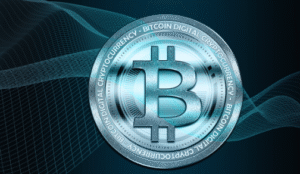$SPY $BTC #inflation #FederalReserve #interestRates #economicPolicy #laborMarket #JeffSchmid #KansasCityFed #monetaryPolicy #financialNews #marketTrends #centralBank
Why Did Fed’s Jeff Schmid Vote Against Rate Cuts Despite High Inflation? Discover His Reasoning!
In the latest inflation news, Kansas City Fed President Jeff Schmid raised eyebrows by opposing any rate cuts, despite persistent inflationary pressures. Schmid emphasizes that lower interest rates have limited effectiveness in addressing what he terms “structural changes” within the labor market. This perspective underscores a broader economic sentiment that merely adjusting rates cannot resolve fundamental issues affecting employment and wage growth.
Understanding Structural Changes in the Labor Market
Schmid’s viewpoint reflects a significant shift in how economic leaders perceive labor market dynamics. Structural changes include factors like technological advancements, demographic shifts, and changes in worker skills. These elements contribute to the mismatch between job openings and qualified candidates. Therefore, Schmid argues that reducing rates may not stimulate the desired effects, as the underlying challenges require more than monetary policy adjustments.
The Fed’s current inflation news indicates a persistent rate above the target, prompting discussions on whether to implement rate cuts. However, Schmid’s vote against such a move reveals an awareness that inflation is not solely a result of monetary policy but is intertwined with larger economic forces.
The Implications of Rate Cuts on Economic Growth
Lowering rates can encourage borrowing and spending, which often leads to immediate economic stimulation. However, Schmid warns that this approach may not yield significant improvements in the labor market. Instead, he advocates for targeted solutions that address structural issues, such as enhancing education and retraining programs to prepare the workforce for evolving job landscapes.
Moreover, Schmid’s stance aligns with a growing concern among economists regarding the long-term impacts of low rates. Prolonged low-interest environments can lead to asset bubbles and distortions in the economy, making it imperative to focus on sustainable growth strategies rather than temporary fixes.
The Role of Federal Reserve Policy in Current Economic Conditions
The Federal Reserve’s approach to inflation and interest rates has far-reaching implications for investors and consumers alike. As the central bank navigates these challenging waters, Schmid’s insights emphasize the need for a balanced strategy that considers both monetary and fiscal policy dimensions.
Investors should remain vigilant as the Fed evaluates its policy stance. Understanding these dynamics provides critical context for market movements and trends. For those interested in stock market developments, visiting this link offers in-depth analysis and updates.
Conclusion: The Path Forward for the Federal Reserve
Moving forward, the Federal Reserve faces the challenge of balancing inflation control while addressing structural labor market issues. Schmid’s vote against rate cuts serves as a reminder that effective economic policy requires a multi-faceted approach. As this situation unfolds, market participants must stay informed about ongoing developments to make educated decisions.
In summary, Schmid’s reasoning highlights the complexities of the current economic landscape. As inflation continues to be a pressing concern, the Federal Reserve’s strategies will significantly impact future growth trajectories. Stay tuned for further updates on inflation news and economic policy decisions that will shape the financial landscape in the months to come.











Comments are closed.